#perperuna
Explore tagged Tumblr posts
Photo
Rain Deities.
💦💦💦💦


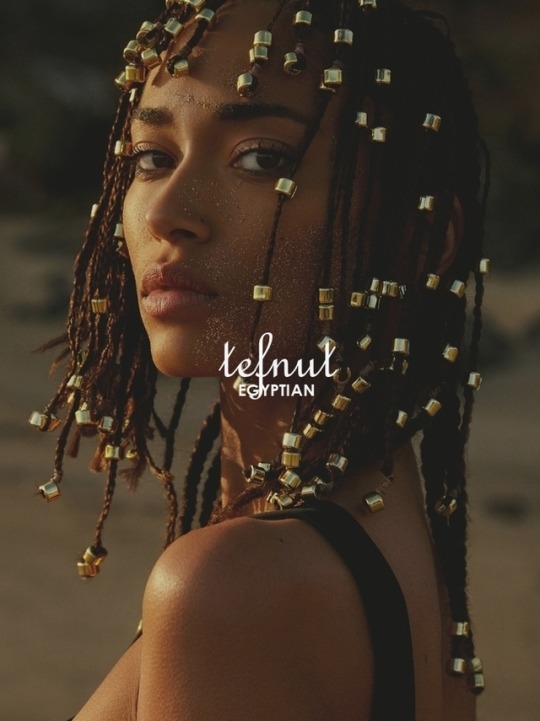



Deities of Rain
224 notes
·
View notes
Text
Who to pray to when you have a problem or issue with something?
Slavic deities edition

Reminder that slavic paganism is an open practice, and to not listen to racists and gatekeepers. Also a reminder that my messages are always open if you have any questions regarding slavic paganism. I may respond slowly but surely i will reply.
Who to pray to when you have problems with love and romance?
Lada, the goddess of love.
Vesna, the goddess of spring.
Lelya, the goddess of spring and love.
Who to pray to when you have problems with fertility, accepting infertility, and managing children and motherhood?
Mokosh, goddess of the Earth, motherhood, childbirth, women, weaving, sewing, fertility etc!
Who to pray to when you have problems with accepting your masculinity and managing with fatherhood and manhood?
Rod , the god of family and the creator of other gods. (While his historical existance is debated, it doesn't hurt to utter a prayer or a few words of praise!)
Svarog, the god of blacksmiths and fire (He is the father of Dajbog (Svarozhich) so it can be a great idea to ask away for advice / help!)
Perun , the god of thunder, storms, kingship, law and order.
Who to pray to for wisdom and knowledge?
Baba Yaga, the goddess of witchcraft. (Although she is often seen as a mythical figure, many slavic pagans also view her as a goddess.)
Veles, the god of underworld, the cattle, and chaos. As he is often seen as a trickster deity.
Who to pray to for abundance and prosperity?
Perun, the god of thunder, storms, fertility, kingship, law and order.
Dajbog, the god of the Sun, light , fire and prosperity.
Who to pray to for our deceased loved ones to rest in peace?
Morana and Veles.
Who to pray to for rain and fertility?
Perun, Dodola / Perperuna.
Who to pray to for happiness and positivity?
Jarilo / Yarilo, the god of spring (and more...)
Vesna , the goddess of spring
Dajbog, the god of the Sun (and more...)
Who to pray to for justice?
Perun, as he is god of law, justice and oaths.
Who to pray to for happiness in marriage?
Perun and Dodola.
You can also pray to Morana for this.
Reminder , it's always good to ask away if a deity can help you with something. These aren't strict guidelines, but rather a resource to help you understand better who you may be able to pray to for something. Doesn't mean you should strictly pray to Perun for justice, but it means it's a good idea!
It's Always beneficial to ask.
24 notes
·
View notes
Text

Andrey Shishkin - Perperuna
#ancient gods#slavic#słowianie#słowianin#słowiaństwo#poganie#pogaństwo#Polish pagan gods#polish gods#polska historia#polska#początki państwa polskiego#bogowie słowian#polscy bogowie
1 note
·
View note
Text
Love the detail of his golden beard and silver hair straight from descriptions of his idols. As for his partner... Fellows from Lumyd pondered her too. Those who understand slovak can read the article, for the rest I shall provide english translation.
Ancient Slavs begged her for rain: Did Perun have a consort who was forgotten?
Dušan Valent, 2020-11-03 07:59:00 According to one of the most significant linguists of 20th century fragments of old Indo-european traditions suggest that Perun and his predecessor was accompanied by a female partner or “concubine“.
When summer drought beat upon fields and wells of southern Slavs, they turned to higher powers for help. Ritual they conducted to summon rain was quite peculiar.
It centred around a young girl, 5 to 12 years old[1]. The ceremony necessitated her absolute innocence. This girl had to be unable to conceive as of yet, while her mother had to be past her child-bearing age (post-menopausal).
People dressed this chosen maiden into woven twigs underneath which she wore nothing or only old tattered dress. Upon her head she bore flower crowns and occasionally also bouquet in her hands. Followed by other children she walked through the village, stopping at each house to sing songs and praise to Perun or later st. Elias so as to make them water and fertilize Land. While other children danced in circle old women came out to pour water upon the girl. The was followed by feasting and drinking in honour of Perun.
After all, Perun wasn’t merely a god of storms, lightning and thunder, but also of rain and fertility. And once Christianity replaced Slavic paganism, elements of his cult were incorporated into veneration of saint Elias who too was associated with storms and rain.
In some places aforementioned ritual lasted into 20th century, practiced not only by Slavic nations of Balkans, but also in Romania and northern Greece. Many researchers reason it spread there from Slavs.

Relict of a forgotten goddess?
Roman Jakobson, one of the greatest linguists of 20th century, remarked upon the fact that the ritual and the young girl on whom it is focused bear “reduplicated name of Perun”. Through reduplication of word root “per“ in Perun we arrive at Perperuna (per-perun-a): according to Jakobson the original expression from which local variations derive - prporuľa, perperuda, peruniga etc.
Did this expression emerge as name of the specific ritual and its main character. In opinion of this Russo-American linguists not. Roman Jakobson claims we are dealing with tradition that hails from prehistoric paleolithic times and Perperuna ritual captures precious relict of an ancient, mostly forgotten mythical being, a concubine of god Perun.
Of course, nowadays researchers of folkloric traditions (especially those of Balkans) tread very carefully. Instead of automatically assuming they are paleolithic relicts reaching as far as stone age, they understand that many are products of folk creativity not older than few centuries.
However, in this case Roman Jakobson states that when we use lens of historical linguistics, which study mechanisms of word evolution in various languages, and combine them with comparative mythology of Indo-European nations, we find many clues pointing towards Perperuna’s origin in deep Indo-European prehistory.
Balto-Slavic or Balkan roots?
Let’s take a closer look at origin of the ritual. Number of Balkan and Romanian researchers are of the mind that the ritual originally wasn’t Slavic and in fact Slavs borrowed it from older pre-Slavic Balkan populations, like Thracians. These researchers support their claims with written evidence of Perkos or Perkon cult dated to antiquity, apparently a Thracian deity etymologically corresponding to Perun.
But here’s the catch. Rainmaking ritual very similar to that of Balkan people is attested among Balts. This is very important. Balts are the nearest, “brotherly”, branch of Indo-European tree to Slavs and according to historical linguists they share centuries of intertwined – Balto-Slavic past.
For example, there is a Lithuanian record from 1610 describing a ceremony in honour of Perkunas, Baltic equivalent of Perun: “When there is a great drought upon land and no rain to be seen, in mountains and in very deep forests they start to make noise and bring him red heifer, black male goat, black rooster as sacrifice, hallowed by this ritual they gather in great numbers from neighbourhoods, feasting and drinking there, summoning Perun, a god of thunder, most of all pouring beer into vessels and thrice carrying them around bonfire they started there and then emptying the vessels into the flames and praying to Perkunas so that he would give them rain and moisture.”
And we have some more supporting evidence for Baltic connection. Among Balkan Slavs there is another attested term beside Perperuna (and its variants). It is dodola[2] (or dudula, dodoa), which according to Roman Jakobson shares origin with Lithuanian expressions “dundulis” meaning rumble, thunder (“dundeti” – to make thunder), used as alternative (substitutive synonym) for taboo direct naming of thunder god Perkunas. “It is difficult to explain correspondencies between these two – southern Slavic and Lithuanian – pairs of sacral synonyms without making appeal to their origin in Balto-Slavic era,” says Russo-American linguist.
Indications of presence of a ritual and a deity similar to Perperuna were found also among eastern Slavs, which speaks in favour of Balto-Slavic instead of Balkan origin. One of them is Pereplut, a lower deity recorded in 12th and 14th century. Roman Jakobson considers ceremonies in her honour to bear strong resemblance to southern Slavic and Baltic ritual: their observance was tied to water element, cups were raised and poured in honour of the deity, ritual circular dances accompanied the ceremony. “In the first component of name Pereplut We can easily recognize reduplicated root “per” with pleophonic [type of vowel shift in Slavic languages, author’s note] word form per- > pre/,” says Jakobson.
Russo-American expert however reaches far beyond Balto-Slavic area. In his opinion incantations performed during ritual of Perperuna show “remarkable similarity to Rigvedic ritual prayers to Parjanya, asking for rain and crop.”
God of thunder Parjanya is one of lesser known vedic gods. The main thunder god of Vedic tradition is Indra. But it is Parjanya in particular who shares comparable name and characteristics to those of Indo-European thunder god. He is associated with rain, assigned with a form of benevolent bull and known to be smiting demons and evildoers with lightning bolts. Anthropologist James George Frazer even shortly describes a rite akin to Blkn Perperuna taking place in Hindu town Puné, where local boys dress one of themselves into twigs and name him a “Rain king”. Afterwards they walk from house to house where they have water poured on them are food given to them, that they later eat.
It seems we really are dealing with a ritual originating from prehistoric Indo-European times.

Forgotten Indo-European goddess
What about potential goddess though? Did ancient Balto-Slavic rite tied to a god of storm and rain exist only, or do we have proofs of worship in honour of Perperuna as an actual entity and consort of Perun?
In Baltic tradition there is no female figure of similar name connected to rain-making ritual. But according to Jakobson such divine being in fact did exist in Baltic worldview. Her name was Perkunija and she was mostly known as Perun’s mother. And occasionally she was instead recognized as his wife or companion.
Germanic traditions offer another piece of puzzle. In Jakobson’s opinion supposed pairs Perun-Perperuna and Perkunas-Perkunija etymologically correspond to pair Fjörgynn-Fjörgyn.
From linguistic perspective male name Fjörgynn is almost direct equivalent to Baltic Perkunas (emergent from wordform *Perkwún(i)yos). Unfortunately, all we know about him from surviving traditions is his parentage od goddess Frigg (wife to Odin). Germanists consider him archaic relict pushed to sidelines: based on etymology of his name there is a notion it was him who originally held position of thunder god. When it comes to goddess Fjörgyn (emergent from wordform *Perkwuni), her role in Nordic myth is that of Thor’s mother.
One inconspicuous relict can be found even in ancient Greece, where role of thunder god belonged to Zeus. To be more precise, Zeus embodied complicated mixture of myths both of Indo-European origin and from Near East. He has attributes of prehistoric Indo-European god of daytime sky (*Dejeus), from whom Zeus derives his name, and prehistoric Indo-European thunder god (*Perkwunos), whose name endured in term od Zeus‘ lightning weapon (Keraunos). In ancient Greek tradition there is also female counterpart to this term, Keraunia. Sophocles and Euripides mention Keraunia as one of names of Zeus‘ lover Semele.
Kerauns and Keraunia are therefore both etymologically and through association with a thunder god equivalents to pairs Perun-Perperuna, Perkunas-Perkunija and Fjörgynn-Fjörgyn.
At last, but not least, there are hints that relict of Perun’s female companion was preserved among Slavs not only as term for the main character of rain-making rite, but also as name of an actual goddess. Its alternative title Dodola has Bulgarian variants such as didjulja, didjul, djudjul, “which we can compare to Polish Dzidziela” says Jakobson. Dzidziela is one of names of Devana[3], goddess of daylight and woods and most importantly daughter of Perun.

Pushed to the sidelines by goddess of earth?
Listed examples od goddesses associated with deity of thunder and bearing similar name to his can be traced to number of Indo-European traditions. That means they might be referring to prehistoric Indo-European times (approximately 4500-2500 B.C.), therefore a consort[4] of prehistoric Indo-European thunder god *Perkwunos. At the same time these relicts are so miniscule, sidelined or transformed by later traditions, that supposed goddess (analogically *Perkwunia[5]) had to lost her position deep into prehistoric times.
What happened?
Earth goddess is most likely at fault. In Germanic tradition in was earth goddess Jörd whose influence expandedat the expense of Fjörgyn and her association with Thor. In fact, Fjörgyn was very often even merged and identified with her.
Similarly in ancient Greek tradition Keraunia, in spite of her name characteristic of thunder deity, is identified with Semele, who etymologically corresponds to Indo-European goddesses of earth, such as Baltic Žemyna, Hittite Daganzipa and Greek Demeter and Gaia/Ge[6].
Why such development? I couldn’t find the answer in relevant literature. But Jan Korda, author of excellent blog Karug dedicated to Indo-European mythology, came with quite an interesting idea. When I consulted him, he drew my attention to the fact, that thunder god’s consort and earth goddess are not interchangeable in regards to their functions: “I suppose, that thunder gods female companion is “humble” and “cultic” deity, suitable for rain-making rituals, but with little influence in other domains. Earth is “great” deity who has not only cultic function, but even plays a role in mythic narratives and thus her mentions had better chances to last until now.”
These two goddesses were not confused because of having the same partner. “I’d rather say that earth deity overshadowed thunder god’s consort in those cases, when thunder god took upon himself role of sky deity (pr as in case of Greece when sky deity took upon himself role of thunder god)”, but did not tak over her function – female deity hailed during rain-making rituals.”
If you like our posts, please support us on Patreon. Even symbolic contribution helps.
Author of the article sends many thanks to Jan Korda for his valuable suggestions.
Notes
1 In some versions boy or numerous girls.
2 In Roman Jakobson’s view this tradition shares origin with another one. He brings up a place called Dodona situated in northern Greek Epeira, where oracle of Zeus’ sacred oak (typical tree of Indo-European thunder gods) used to stand. It was second most important oracle after Delphi one. Its priests interpreted rustling of oak branches I the wind as messages from Zeus. According to archeologic findings Dodona oracle served this purpose since 3rd millennium B.C. Philologist Olga Zolotnikova argues in one of her recent studies that this sanctum was founded by “some Indo-European tribe of herdsmen from northern Balkans as customary place of worship of a storm god”. Zolotnikova reconstructs his name as *Do(n)don. In her opinion this deity was later replaced be gods of Greeks, most prominently by equivalent *Do(n)dona Zeus.
3 Authenticity of this goddess is uncertain – nevertheless Michal Téra in one of his recent works assents that she was known in archaic or at least folkloric tradition.
4 There is a possibility, that the very „pairing“ of etymologicallly comparable Indo-European gods was a much more widespread tradition: fragments of such nature are captured in mythology of Mykens (1500-1300 B.C.). Among names of deities there is also equivalent famel companion of Poseidon named Posidaeia and female companion of Zeus (in Mykens called Diqo/Diwe) named Diwia. More about this hypothesis in future.
5 As it happens, original Celtic term for Hercynian forest has roots in prehistoric Celtic word form *perkunia and that one in prehistoric Indo-European *perkwunia „oak (forest)“. Analogically, name of Germanic goddess Fjörgyn used to be poetic phrase denoting landscape of (woody) muntains.
6 Ancient Greeks adopted various equivalent deities, not only earth goddess.
Literature
Frazer, J. G. (1890): The Golden Bough. Macmillan. Jakobson, R. (1985): Selected Writings: Volume VII. Contributions to Comparative Mythology. Walter de Gruyter. Profantová, N., Profant, M. (2000): Encyklopedie slovanských bohů a mýtů. Libri. Puhvel, J. (1989). Comparative Mythology. John Hopkins University Press. Rutherford, I. (2013). Mycenaean Religion. In M. Salzman: The Cambridge History of Religions in the Ancient World: pp. 256-279. Cambridge University Téra, M. (2009): Perun - bůh hromovládce. Pavel Mervart. West, M. L. (2007): Indo-European Poetry and Myth. Oxford University Press. Zolotnikova, O. A. (2019): The sanctuary of Zeus in Dodona: Evolution of the religious concept. Journal Of Hellenic Religion, Vol. 12, 85-132.

Perun and Dodola. I think they look good together. Their relationship is such that with her he's a lovely bunny and with others he's a fierce beast. Hmm. Love them))
#Perun#Dodola#Slavic mythology#Slovanská mytológia#Slavic deities#Slovanskí bohovia a bytosti#Indo-European#comparative mythology#thunder god#Lumyd
74 notes
·
View notes
Text




day 67/100 days of productivity
today was a super tough day in regards of my mental state but I managed to get up and manoeuvred myself quite well through an arising anxiety attack
i also did:
some laundry
cooked one meal
did the follow-up reading of the previous task while also doing good job on my reflection of task 1
started reading The Cruel Prince to see it the book series are really worth the hype… thus far it’s…. okay. We’ll see, no judgment yet to make
this song always helps me through my panic and anxiety attacks; maybe it will help also someone else
youtube
i am praying to the gods and ancestors, call upon the power of my fellow witches, past, present and future, that this will end. I call upon Freya, Kali and Hel. I call upon Odin, Tyr and Lilith. I call upon Lada, Morana and Perperuna. I call upon Kostroma, Baba Slata and Letnicha Lola. I call upon the Empress Wu Zhao, the Wild Woman and Baba Yaga. Hear my prayers and guide me through this time with your wisdom, strength and power. Let this end. abuse does not make you strong. It breaks you. let it end. 🙏🏽
#studyblr#books and writing#booklover#books & libraries#student life#book blog#study blog#studygram#bookblr#student#100 days of productivity#mentally tired#mental health#mentally fucked#mental abuse#mental problems#emotionally drained#emotional abuse#emotions#emotional#emotionally unavailable#witchy stuff#witchcraft#witchblr#witches#witchy vibes#witch aesthetic#norse gods#slavic#eastern europe
0 notes
Photo

M E D U S A 0.2 #medusa #monster #snake #snakes #bust #deity #flowers #goddess #greek #marble #mithology #morana #roman #sculpture #slavic #slavicmythology #spring #helenic #perperuna #dodola #art #girl #woman https://www.instagram.com/p/CDTksdZpFux/?igshid=215wwg2feub
#medusa#monster#snake#snakes#bust#deity#flowers#goddess#greek#marble#mithology#morana#roman#sculpture#slavic#slavicmythology#spring#helenic#perperuna#dodola#art#girl#woman
64 notes
·
View notes
Text


Perperuna visited today to wash my suffering out of the soil. I made a small offering to her and took the chance to burn the oil I prepared on the full moon.
Take a moment today to embrace the natural world around you 🌿 even as we huddle inside and quietly celebrate the beginning of a new year, it’ll still be there in the morning for us to enjoy and protect
#new year ritual#witchery#paganism#rodnovery#slavic paganism#slavic native faith#perperuna#dodola#witchblr#witch aesthetic#nature#deity work
18 notes
·
View notes
Text

Dodola's dance
#dodola#slavic mythology#mythology#digital painting#illustration#goddess#perperuna#perun#landscape painting#digital art
6 notes
·
View notes
Photo
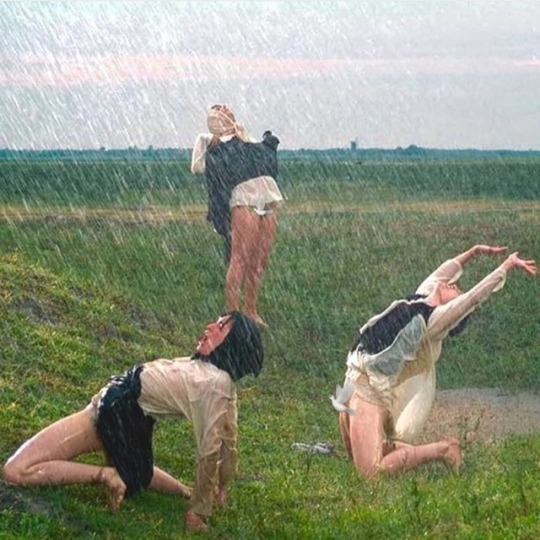
"Women In The Rain," Marina Abramović Part of her "Balkan Erotic Epic" instillation, 2005 • • • Dodole: Pagan rain tradition of the Balkans • While its origins are disputed (some believe it derives from the Thracians, others credit its origins to the Slavs), like most pagan customs, it is a ritual that traverses many cultures and languages across the world. • "Dodole" honors a rain Goddess (every culture has at least ONE of those in their pantheon 😅) • "Perperuna" in Bulgaria, Macedonia, Romania, Serbia, Ukraine, etc She is considered the wife of "Perun," the God of thunder (her name is the feminized version of "Perun") • Albanians have similar deities, the Goddess "Prende," wife of "Perëndi," the God of thunder who ruled the skies. • Fun fact: after the spread of Christianity, most pagan deities and rituals were conformed to fit the new religious teachings, that's why today's Albanians use the term, "perëndi" as a synonym for the Abrahamic "God" • • • #thebalkanwitch #balkanwitchcraft #balkans #mood #marinaabramovic #pagan #paganritual #dodole #thracian #illyrian #albanian #mythology #witchblr #albanianmythology #perendi #prende #perperuna #perun #raindance #springritual #raingoddess #witchesofinstagram #pagansofinstagram #themoreyouknow #funfact #knowyourhistory #tradition #culture #history #roots https://www.instagram.com/p/BzbsFsan5yj/?igshid=oug2purcn6g9
#thebalkanwitch#balkanwitchcraft#balkans#mood#marinaabramovic#pagan#paganritual#dodole#thracian#illyrian#albanian#mythology#witchblr#albanianmythology#perendi#prende#perperuna#perun#raindance#springritual#raingoddess#witchesofinstagram#pagansofinstagram#themoreyouknow#funfact#knowyourhistory#tradition#culture#history#roots
1 note
·
View note
Photo
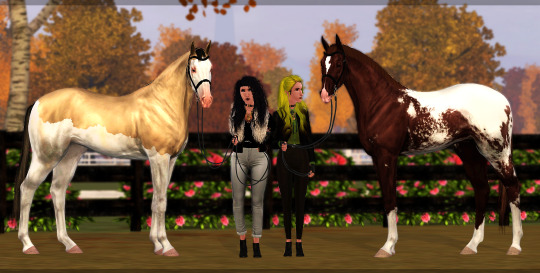
|| sɪɴᴄᴇ ɪ'ᴍ ɪɴ ᴛʜᴇ ᴍɪᴅᴅʟᴇ ᴏғ ᴏʀɢᴀɴɪᴢɪɴɢ sᴛᴜғғ ᴀɴᴅ ᴍᴏᴠɪɴɢ, ɪ'ᴍ ᴊᴜsᴛ ɢᴏɴɴᴀ ᴘᴏsᴛ ᴛʜɪs!
|| ᴏɴ ᴛʜᴇ ʟᴇғᴛ, Vᴇʀɪᴄᴀ ᴀɴᴅ ʜᴇʀ ʙᴇʟᴏᴠᴇᴅ ᴡɪᴇʟᴋᴏᴘᴏʟsᴋɪ ᴍᴀʀᴇ, KAL Yᴀʀᴜɴᴀ. ᴏɴ ᴛʜᴇ ʀɪɢʜᴛ, Vᴀʟᴇsᴋᴀ ᴀɴᴅ ʜᴇʀ ᴍᴏᴜɴᴛ, ᴀɴᴏᴛʜᴇʀ ᴡɪᴇʟᴋᴏᴘᴏʟsᴋɪ ᴍᴀʀᴇ, KAL Pᴇʀᴘᴇʀᴜɴᴀ.
|| Wɪsʜ ʏᴏᴜ ᴀʟʟ ᴀ ɢʀᴇᴀᴛ ᴡᴇᴇᴋᴇɴᴅ, ᴀs I ᴍɪɢʜᴛ ʙᴇ ᴏғғ ᴛᴜᴍʙʟʀ ғᴏʀ ᴀ ғᴇᴡ ᴅᴀʏs!!
#equiality sims#equus sims#sims 3 equestrian#sims 3 horses#sims 3 roleplay#Sims 3#simblr#valeska#verica#yaruna#perperuna#i really love these gals#and do i mean horses or staff members?#yes
1 note
·
View note
Photo






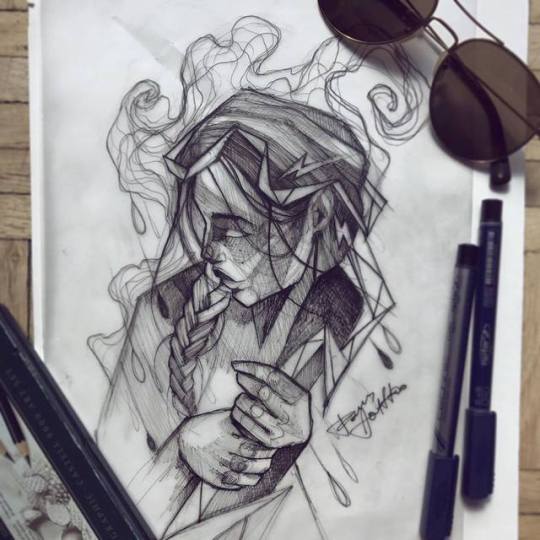

Gods and spirits from Polish (Slavic) mythology by tattoo artist Falka Art.
Above: Południca, Marzanna, Pogoda, Latawica, Leszy-Borowy & Błędne Ogniki, Gogołada, Perperuna, Licho Leśne.
#poland#illustration#falka art#slavic mythology#polish mythology#slavs#południca#marzanna#morana#pogoda#latawica#leszy#borowy#błędne ogniki#gogołada#perperuna#licho#licho leśne
630 notes
·
View notes
Photo

@hynpos myth event day 9: favorite slavic deity
Dodola (or Perperuna)
And who shall wear spring flowers in her hair
The fairest young woman anywhere?
Who'll sway on a swing all night through
And at daybreak wash her face in the dew
Then with more daughters in her train
Dance for the clouds to send down rain
34 notes
·
View notes
Photo



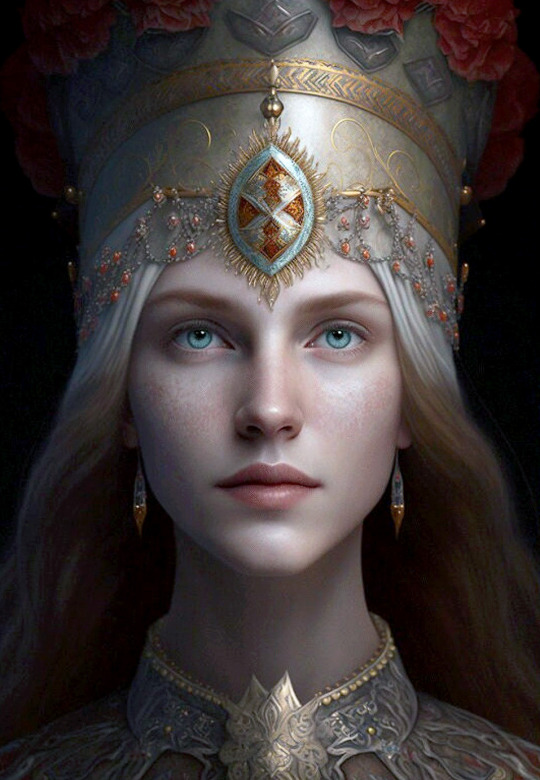
The Evermore Grimoire: Slavic Mythology
Dodola (also known as Perperuna) was the goddess of rain in Slavic mythology and only dressed in raindrops. She was the wife Perun (god of thunder) and was said to wield the lightning of her husband in order to punish those who were violent or disrespectful towards women. Slavs believed that when Dodola milked her heavenly cows (the clouds) it would then rain on earth. Each spring she would fly over the woods and fields, and spread vernal greenery, decorating the earth and trees with blossoms. Dodola was also invoked through the act of singing and dancing, particularly during periods of drought. Those that worshipped her would perform specific songs and dances in her honour in the hopes that she would visit them and bringing the rain with her.
artwork by arsdeis
655 notes
·
View notes
Text
.•° ✿ °•.
green week / rusalki week — may 16 through pentecost
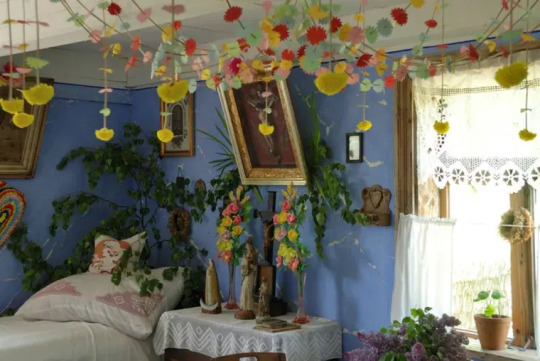
"Green Week is connected to Slavic rituals of celebrating the full spring and the reborn greenery (the nature fully reborn after winter) after all the tree branches had already turned green. Its core nature is a form of maintenance of the rhythm of the nature, with magical practices of purifying the surroundings from demons or evil spirits that might have an effect on the further process of growth towards the end of spring. Goal of these rituals was designed to boost nature’s fertility, the ability to grow, and to prepare the soil, crops and livestock for the upcoming summer season and the later (expectantly abundant) harvest."
CUSTOMS
• adorning houses, pathways and shrines with green branches (particularly of the birch-tree), herbs and flowers
• sweeping floors with a green birch-tree branch to ‘purify’ it
• scattering sweet flag / calamus on floors as a protective barrier
• adorning cattle with flowers and incensing them with sacred smoke (more about it here)
• rolling eggs around cattle’s sides in rituals of protection and of boosting the fertility (same ritual was performed for humans)
• burning bonfires around which joyful celebrations with dances and singing were organized
• walking with torches around crop fields to get rid of evil spirits and demons
• walking with so-called ‘gaik’ or ‘maik’ (branches decorated with flowers and ribbons, held on a long stick)
some other ways we can celebrate in current time:
• honor your ancestors, especially the ones that passed away too early or in tragic circumstances (you can also honor Rod, the god of fate, bloodlines, ancestral magic and ancestral knowledge)
• honor the spirits of local woods and bodies of water - you could help clean the woods and waters and give offerings asking for blessings of abundance and good luck
• honor the gods - especially deities connected with spring, fertility, youth and beauty such as Lelya, Dodola/Perperuna, Mokosh, Lada, Jarilo, Vesna, Zhiva, Dazbog, Morana (in her spring-planting-mother aspect), Kostroma and Kupalo
• dress a birch tree, make offerings and perform rirtuals in front of it - you can take a couple of sticks found nearby home, for good luck and success
• while I discourage this course of action this particular year, because of the virus situation normally you’d also want to organize a party and sing and dance with your friends, or go watch/play sports game of some sort
• perform rituals and cast spells connected to wealth, health, beauty, happiness, friendship, love and fertility
• make a bonfire. us slavs love bonfires. slavs also love jumping through bonfires for good luck, but please make sure to spread the kindling around first and try not get hurt while performing your feat of agility.
• get a sword, real or fake and dance with it. don’t get hurt, it would ruin the fun.
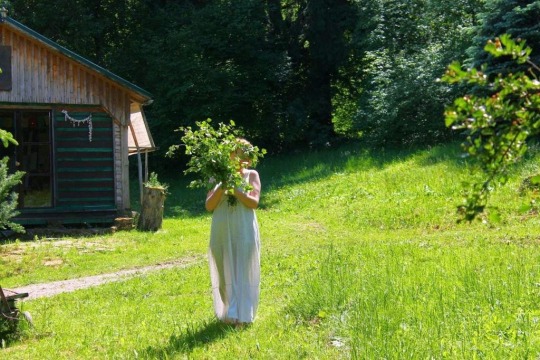
°•. ✿ .•°
sources:
https://lamusdworski.wordpress.com/2016/05/24/green-week/
https://slavicfolklore.com/the-rusalka-and-the-green-week-festival
https://aminoapps.com/c/pagans-witches/amp/blog/rusalka-week-green-week/QKn0_VLjiXu3odYPNkbd8LzbXkMepd6zWg8
#slavic paganism#slavic polytheism#slavic tradition#slavic traditional polytheism#rusalka#rusalki#rusalka week#green week#croatian#pagan witch#witchcraft#slavic witch#slavic folklore#slavic gods#slavic traditional#witchblr#baby witch
237 notes
·
View notes
Text
"Well... I got into a bit of trouble that I did not cause?" He answers truthfully, but also confused. "Not sure how to explain this, but it's with Circe... Again." Hard to also be Glaucus somehow for the poor musician.
A good look on the violinist and he really looks beaten up. Yikes. "Perché non posso avere un momento di pace?" He sighs before entering and sitting down in front of Seimei. "Anyway..."
He explains how he is minding his own business in the cafeteria until Circe barges in, really angered for some reason. As there aren't any words to describe this for neither Francesco, Glaucus nor Dodola, Alter Ego says it in how Mayari would say it. "Parang sobrang nagigigil (negative) siya sa akin. You get what I mean? At this point I'm just a punching bag for her, even if I try to stay clear." Oof.
@originlist
A knock on the door to the onmiyouji's room and voice that seems to be hesitant can be heard on the outside. "Abe no Seimei? Are you there?"
The glowing eye can be seen through the crack of the door if he were to open it. There's no need to guess that it's Mayari who is at the door. He seems to be battered. "Sorry to bother, I need a bit of help."
#[ic] Francesco Salieri#originlist#rip to francesco‚ mayari and perperuna for getting caught in whatever the fuck glaucus got himself in to with circe and scylla#had to specify which kind of gigil because yeah#gigil in a positive way: something so cute that you want to squish it#gigil in a negative way: something that makes your blood boil so much that you want to angrily squish it#both makes you grit your teeth and try to resist the urge to do so#it's kind of an emotion or something? idk#anyway‚ yeah
7 notes
·
View notes
Photo

P E R P E R U N A
FACEBOOK INSTAGRAM DEVIANTART
© Oliver Ler Marinkoski 2018 COPYRIGHT NOTICE © Do not use my picture without my permission. All images used in this photo are mine. Thank you!
#slavic#goddess#deity#woman#greek#roman#sculpture#marble#perperuna#dodola#kalashnikov#AK-47#gun#rifle#weapon#thunder#pagan#neopagan#macedonian#art#surreal#slav#russian
253 notes
·
View notes